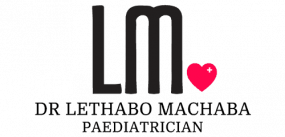BREASTFEEDING VS. FORMULA FEEDING
A child’s infancy stage can be taxing on mothers but also very rewarding. Making sure your little one gets the right nutrition is extremely important.
The body content of your post goes here. To edit this text, click on it and delete this default text and start typing your own or paste your own from a different source.
In general, breast milk is considered the gold standard due to its multiple benefits for infant nutrition and should be the default mode of feeding. South Africa promotes exclusive breastfeeding for the first six months with an attempt to decrease child mortality. Formula feeding can be an alternative when breastfeeding challenges are present and exhausted. It too can provide nutritional value.
WHEN TO BREASTFEED
For the first six months of a child’s life, I recommend exclusive breastfeeding. After that, you can start introducing solids while continuing to breastfeed until they are at least 2, in keeping with WHO recommendation.
There is no hard and fast rule about when you should stop breastfeeding your child and despite popular beliefs, you will not cause any psychological damage by breastfeeding them too long. It’s good to trust your intuition and stop when it feels right for you and your child.
BENEFITS OF BREAST MILK
- Breast milk has the ideal ratio of nutrients for a growing baby.
- Breast milk is easier for babies to digest than formula.
- Breast milk contains immune boosting elements that babies can’t yet make in their own bodies and can’t get from formula or solid foods.
BREASTMILK’S ONE “FLAW”
Often breast milk doesn’t have enough vitamin D. Ask your doctor about supplementing your babies’ milk with vitamin D.
WHEN FORMULA FEEDING IS APPROPRIATE
Sometimes breastfeeding just isn’t viable. Maybe your body isn’t producing enough milk or you have a specific health-related reason as to why you can’t feed breastmilk to your baby. These things happen and no parent is perfect. What matters is that you do the best you can with what you have. Formula feeding can give your baby the same nutritional complements that breastmilk does. The most significant differences are that it lacks the immune boosting elements but has appropriate amounts of vitamin D.
FORMULA FEEDING THE RIGHT WAY
Although breastfeeding may allow for closer bonding, bottle feeding your baby should still be an interactive experience. You and your baby should both be holding the bottle.
The formula doesn’t need to be warm; some babies are perfectly fine drinking room temperature or even cold milk. If your baby prefers warm milk, you can run hot water over the side of the bottle or leave it to soak in a bowl of hot water until it reaches the desired temperature.
When preparing the formula, follow the right instructions on the container regarding quantities, add water and shake well. The powder generally mixes quite well with water so you shouldn’t encounter any clumps. Remember to boil and cool water first.
Remember to discard any formula that was prepared over 24 hours ago.
Expressing breast milk also has its own set of guidelines to follow and we’ll look at this a bit closer in an upcoming blog so stay tuned!
Share this post
Recent Posts


Leave your little one's health in good hands.
Track your child's growth and development, or assess arising health issues with a paediatrician you can trust.


